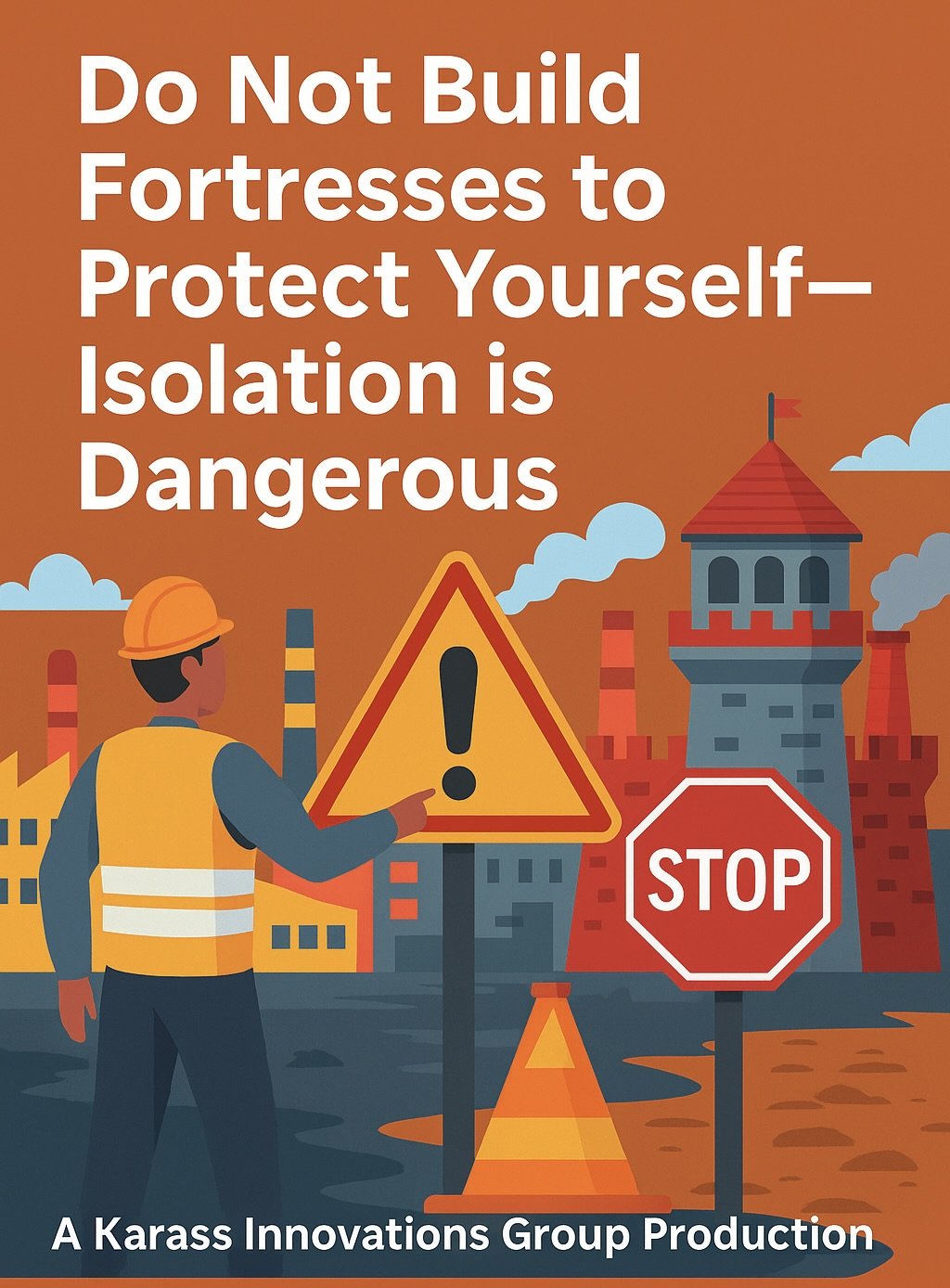Industry Trends and Leadership Insights: “Do Not Build Fortresses to Protect Yourself—Isolation is Dangerous”
Law 18 from The 48 Laws of Power by Robert Greene Applied Across Sectors
1. Manufacturing – Collaboration Drives Innovation
Modern manufacturing is rapidly embracing Industry 4.0, which demands collaboration across traditionally isolated departments. The old siloed structures—where engineering, operations, and maintenance work independently—are now seen as a liability. According to a 2023 Deloitte survey, 73% of high-performing manufacturers credited cross-functional collaboration as a primary driver for innovation. Companies that dismantle organizational “fortresses” see faster problem resolution and increased worker engagement, directly impacting throughput and quality.
2. Economics – Interdependency Over Independence
In economics, global supply chain interdependence has taught a harsh lesson: isolation is economically risky. The 2021–2022 supply disruptions exposed how companies that failed to build diverse partnerships became vulnerable. McKinsey reports that companies with resilient, interconnected supplier networks recovered 2x faster than those operating in isolated procurement models. Economies, like organizations, flourish through diversified interaction and information flow.
3. Engineering – Open-Source and Cross-Discipline Growth
Engineering is shifting from proprietary protectionism to open-source collaboration, especially in areas like AI, renewable energy, and automation. Platforms like GitHub and Stack Overflow thrive because engineers recognize that isolated problem-solving limits scope and scalability. For example, the open-source hardware market is growing at a CAGR of 26.3% and is projected to reach $34.8 billion by 2027. Cross-pollination between electrical, mechanical, and software engineering accelerates product development and innovation.
4. Science – Interdisciplinary Research Breakthroughs
Scientific advancements increasingly come from breaking down academic fortresses. Interdisciplinary teams working across genetics, computer science, and chemistry were pivotal in developing mRNA vaccines. The National Science Foundation notes that interdisciplinary research is growing at 30% per year, and collaborative papers are cited twice as often. Institutions that isolate researchers within rigid departmental boundaries fall behind in both discovery and funding.
5. Education – The Rise of Cross-Institutional Learning
Educational institutions that resist collaboration risk becoming irrelevant. Blended learning models, public-private partnerships, and inter-university programs are reshaping the learning landscape. The number of institutions offering shared curriculum programs with corporate partners rose 43% between 2019 and 2024 (per EDUCAUSE). Teachers and administrators who isolate themselves from community and industry developments often fail to equip students with real-world skills.
6. Medical – Integrated Care Over Siloed Specialties
Healthcare has moved away from isolated specialty practices toward integrated care systems. Value-Based Care models prioritize coordination between primary care, specialists, and behavioral health. According to the American Hospital Association, integrated care reduces hospital readmissions by up to 25%. Organizations that keep departments isolated—such as separating behavioral from physical health—report higher patient dissatisfaction and worse outcomes.
7. Marketing – From Control to Community
Traditional fortress-style brand control is obsolete in today’s marketing. Consumers now demand interaction, transparency, and participation. 91% of consumers say they prefer brands that are authentic and open (Stackla, 2023). Companies like Nike, which invite consumer feedback and community engagement, outperform brands that isolate messaging through top-down strategies. Social listening and collaborative marketing teams now shape campaigns in real-time.
8. Services – Empowerment Through Frontline Feedback
In service industries, isolating leadership from frontline employees leads to missed insights and declining morale. Modern service leaders implement feedback loops, shared dashboards, and daily huddles to stay connected. Gallup’s 2024 Workplace Report found that service teams with strong leadership visibility score 34% higher on customer satisfaction metrics. “Fortress” leadership—relying solely on directives and metrics—fails to capture the nuance of frontline operations.
9. Warehousing & Supply Chain – Connected Intelligence
Supply chain management has transformed through integrated logistics platforms, IoT-enabled visibility, and supplier collaboration. Isolated warehousing systems cause stockouts, delays, and increased costs. Gartner notes that companies using connected supply chain platforms reduce inventory carrying costs by 20% and increase delivery reliability by 30%. Visibility across the chain is now a competitive necessity, not a bonus.
10. Federal Government – Bureaucratic Silos vs. Agile Governance
The Federal Government has long struggled with inter-agency silos. Programs like the U.S. Digital Service (USDS) were created to break down bureaucratic barriers. Cross-agency task forces during the COVID-19 response highlighted the value of collaborative federal governance. According to GAO reports, agencies that shared data and coordinated services reduced response time by 40% during national emergencies. Fortress governance creates red tape; networked governance produces results.

